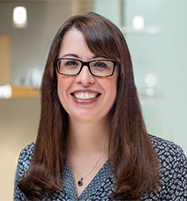Portfolio

By all accounts, Vedere Bio is an inspiring case study of how biomedical research can benefit from RD Fund’s ability to bridge the divide between lab to bedside. Vedere’s optogenetics approach focuses on the development of virus vectors with a simple delivery route to restore vision. With Vedere’s innovation, a gene is inserted to add light sensitivity to a different cell type. The company started in 2019 and was acquired by Novartis in late 2020, becoming RD Fund’s first portfolio company to achieve an exit.
“At first optogenetics was too risky, it was difficult to find funding. We met with several dozen venture capitalist firms, sometimes two and three times,” said John Flannery, PhD, Vedere Scientific Founder, and Professor of Neurobiology, Dept. Molecular & Cell Biology, Associate Director, Helen Wills Neuroscience Institute, University of California, Berkeley. “Our calling card was that RD Fund was willing to make a significant, $5M investment which spoke volumes to other investors. Being backed by the RD Fund, the venture arm of the Foundation Fighting Blindness, with its distinguished scientific advisory board, inspired confidence from the other funds.”
“The top brass taking an interest, making an investment decision and being open to participate was helpful to bringing on other investors and expanding the portfolio,” said Ehud Isacoff, PhD, Vedere Scientific Founder, and Rauch Professor of Neuroscience and Director of the Helen Wills Neuroscience Institute at University of California, Berkeley. “Every time the RD Fund is at the table, investors look more seriously because they know the field and are there for the patients.”
Novartis acquired only a portion of the intellectual property owned by the Vedere team, so they have now set their sights on Vedere Bio II to continue pursuing next generation ocular gene therapies for vision restoration.
“We had never had a company before Vedere, never had industry sponsorship before. When we were first meeting with VCs, several of them wanted us to make the project much bigger than we were comfortable with, to tackle multiple retinal diseases at once,” Flannery said. “The RD Fund team helped us navigate the process and find a funding partner, Atlas Venture, which let us focus on one project that we knew we were best able to do, rather than get spread too thin on multiple projects. The advice was very useful in that situation.”
Vedere aims to increase the quality of vision restoration and preservation for all patients, including those with late-stage disease with vision loss due to photoreceptor death, through delivery of novel payloads via intravitreally delivered AAV capsids. While most current gene therapies are targeted to specific gene mutations, Vedere’s technology is mutation agnostic and has the potential to rapidly add new function regardless of disease stage. Vedere’s novel approach is anticipated to have several distinct advantages over other optogenetics approaches, which could help patients see stationary and moving objects in both bright and dim settings without the need for a vision-enhancing medical device, such as light amplifying goggles.
“Ben Yerxa, head of the RD Fund, has been really useful as we start the new company and approach various retinal disease targets given his work with many projects in the field,” said Flannery. “As a basic scientist working in a laboratory, not with patients, I find it important to talk with clinical colleagues who see patients every day and as I meet patients and families with IRDs I find it quite motivating.”
Vedere’s achievements are a testament to what years of dedication and research in the lab can do if backed up by critical dollars. “Getting VCs to consider you is challenging, it’s very different than running a lab with grants. In academia, you go slower if it’s cheaper. In the private sector, there’s such a premium on going fast, which has been a big scale shift, but it’s ultimately what the patients want as well,” said Flannery.

Shannon Boye, PhD has spent the last 17 years working alongside her husband, Sanford Boye, MSc, researching gene therapy treatments to reverse or prevent blindness in children. Before starting their own company – Atsena Therapeutics – they were focused on developing technologies and optimizing tools to out-license to other companies, but the process was slow and Dr. Boye felt that business decisions were overriding the science. “Our technologies weren’t reaching the patients who needed them,” Dr. Boye said. “We started Atsena to ensure the technology moved forward and that decisions were guided by strong science.”
Atsena Therapeutics is a clinical-stage gene therapy company focused on bringing the life-changing power of genetic medicine to reverse or prevent blindness. The company’s platform is powered by adeno-associated virus (AAV) vectors engineered to overcome the unique hurdles presented by inherited retinal disease. The approach is guided by the specific needs of each patient condition.
Atsena’s novel AAV gene therapy constructs are customized. They use AAV capsids, payloads and delivery approaches that are tailored to each disease. These include dual vectors designed to deliver larger genetic payloads to address genetic mutations that have been untreatable with a single AAV vector. Atsena has also developed AAV vectors that can deliver therapeutics genes far beyond the margins of their injection site. This game changing technology will allow for the safe delivery of therapeutic genes to foveal cones (no need to detach the macula during surgery) and the ability to treat much larger areas of diseased retina. In addition to their novel AAV capsids/constructs and rapidly advancing preclinical programs, the company currently has an ongoing Phase I/II clinical trial evaluating a potential therapy for one of the most common causes of congenital blindness – Leber congenital amaurosis (GUCY2D-LCA1). Recently published results from the first cohort of patients demonstrate that their gene therapy is both safe and effective in patients.
“Foundation Fighting Blindness was instrumental in establishing me as an independent academic investigator. It’s really hard to compete for federal grants when you’re starting out,” Dr. Boye said. “I received my first Foundation grant in 2012, which helped me generate the data I needed to successfully compete for a larger NIH grant that has been ongoing for the last 10 years.”
Dr. Boye’s work is a great example of how the RD Fund is taking research, initially supported by the Foundation Fighting Blindness, one step further by investing in the critical, later-stage clinical trials needed to ensure treatments and cures reach patients. RD Fund’s support allowed Dr. Boye to take her research further and ultimately launch Atsena Therapeutics. “There’s only so much you can do in an academic lab before you hit what the NIH terms the ‘valley of death,’ that chasm you fall into unless you have a ton of capital to move these treatments forward,” Dr. Boye said. “The costs are on another level, and an extreme amount of documentation, staffing, auditing, and contracting is required to complete IND-enabling studies.” RD Fund helps to fill that void and ensure treatments move from bench to bedside.”
With a focus on pediatric disease, Dr. Boye has gotten to know the patients and their families over the years who drive her work. “With two kids of my own, these parents really inspire me. The additional pressures they experience to help their kids succeed and seeing them heartbroken by the social stigma of their child’s visual impairment is very motivating,” said Dr. Boye. “I’m so lucky to work in a potentially life-altering area of research. Watching children walk into their gene therapy trials with a cane, and playing baseball shortly thereafter is awe inspiring.”
When Boye co-founded Atsena she was frustrated by the lull in the field and the slow pace of moving her life-changing treatments forward. Then she met Dr. Ben Yerxa, RD Fund and Foundation Fighting Blindness CEO. Ben helped mentor her and encouraged her to start her own company. “It wasn’t just my science, but also Ben’s business acumen and ability to see a path forward that got Atsena started,” Dr. Boye said. “I have next-to-zero business savvy! Ben coached me through the steps of starting the company, helped eliminate the red tape, and even came with me to my first VC pitch.”
Just over a year, and many pitches later, Boye has the fortune to work with a variety of excellent venture capital investors and still values RD Fund’s unique role. “As a major investor and member of my board, RD Fund’s patient-centered approach helps keep focus on what’s important,” said Dr. Boye. “Their patient focus constantly grounds the work, and having their level of expertise, depth of knowledge, and network is a huge asset to Atsena.”

